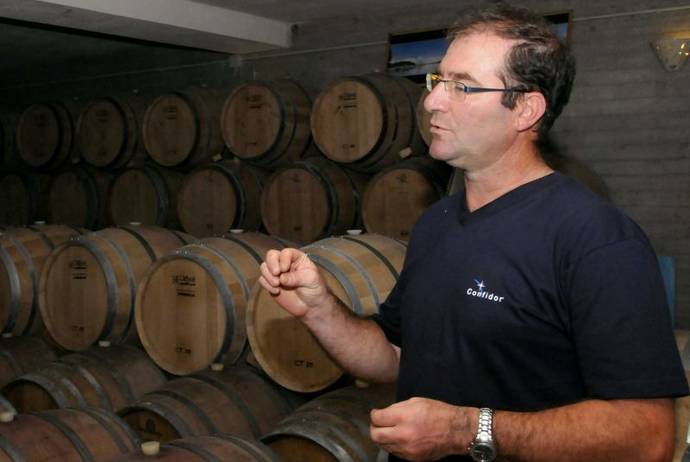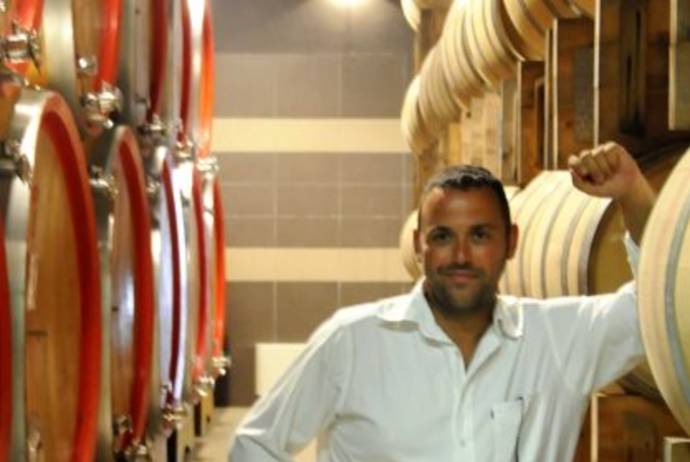I began by visiting the highly prized olive oil maker, Raffaele Cazzetta, of Cazzetta Olive Oil. Then, I attended a “laboratory” at the Slow Food festival, Il Mercatino del Gusto, where a panel of Slow Food specialists took me through a step-by-step tasting.
The drive to L'Azienda Agricola Cazzetta winds through a countryside literally filled with ancient olive trees; many are over 500 years old, and some are over 1,000 years old. You can tell which are the oldest because they have split down the middle to create two, complimentary trees. The types of olives that grow in Puglia are numerous, but Cazzetta only uses two: Ogliarola Salentina and Cellina di Nardò. The company pays particular care to its trees, and in fact, its 5,000 olive trees are given both first and last names. This allows the company to trace which olives from which trees produce which olive oils.
Raffaele Cazzetta warmly welcomed me into his azienda then took me into the factory. Because it was not harvest time, the large machines lay dormant. However, as Cazzetta explained, during harvest the company works absolutely furiously. Every olive that is picked is processed in the same day, and this often requires working all night. The flavor of the olive oil is considered to drastically change if the olives used to make it are not processed within two hours of being picked. Further, if the olive spends time on the ground, it becomes acidic, and in some olive groves, large nets are spread out to catch the olives.
As we walked through his factory, Cazzetta explain to me the process of making oil. When the olives arrive, they are poured onto a conveyer belt and then washed. Next, a machine gently breaks their skins to draw out the oil from the pulp, and afterward the skins and pulp are separated from the oil in a large rotating cylinder. The result is a mixture of water and oil, which is drawn into a machine that separates the majority of the water from the oil. Finally, the oil is put into large steel tanks, which look similar to those used in winemaking, where it is allowed to concentrate for up to a month. During this time, Cazzetta’s olive oils are constantly integrated with one another until the perfect combination is reached. Then the extra virgin olive oil is bottled.
After visiting the Cazzetta Azienda, I partook in an olive oil laboratory offered at the four-day Slow Food festival, Il Mercatino del Gusto. The laboratory took place in the beautiful courtyard of the Palazzo Capece in the city of Maglie and was guided by a panel of 4 Slow Food specialists. Five olive oils were presented and paired with traditional breads, pâté, delicious fresh red onion, and cherry tomatoes. I soon discovered that olive oil tasting is serious business, however I had almost no idea what was expected of me.
First of all, with five cups of olive oil sitting before me, I had to ask: Am I really supposed to drink olive oil? When I looked around, I saw that I was. At the first sip I wanted to cough but the courtyard was too quiet; tears rolled down my face. An important thing to know when tasting olive oil is that if you drink too much a tremendous dry spice attacks the back of your throat. The correct way to taste is to take a very, very small sip and swish it so that it coats the inside your mouth.
The panel of Slow Food specialists explained that olive oil should be paired with foods in a similar fashion as wine: A complex dish demands a complex olive oil, and a light dish demands a light olive oil. The panel spoke with longing of having olive oil menus offered alongside wine menus in restaurants. I must admit that I had a very hard time distinguishing different tastes from the five olive oils, and it reminded me of the difficulties I had when I first tried to distinguish particular flavors in wine. I could tell however, that I liked numbers three and four best. They were very fruity, and, well, tasted like fresh olives.
The most important thing that I learned was that good olive oil, such as Cazzetta’s, should always be eaten raw and only used to finish a dish. While my experiences did not make me an olive oil connoisseur, they did show me that high-quality olive oil is the result of having respect for hard work and great olives. The best producers hire a large number of harvesters each season to ensure that the olives are brought into the factory at their peak. Just like wine, the best product is the result of having the best fruit.






























.jpg) Rose bushes are planted at the ends of the rows—but their purpose is more than aesthetic. “The roses warn us of maledictions such as oidio and malbianco, and other types of mildew,” explains Piero. “The mildews affect the roses first, and when we see these effects, we have time to protect the vineyard.” Fungus is a major danger in Puglia’s hot, sun-soaked environment, and if it were not for the crosswinds flowing from the Ionian and Adriatic Seas, the grapes would simply rot on the vines. This technique of organic farming seems more like simple common sense than ingenuity when Piero explains it, but such techniques are what made the winery a certified organic wine producer distributed by Delinat. Delinat is a German distributor of organic products throughout Europe. The Swiss organization Bio-Inspecta certifies all of Delinat’s products. At the time of writing, Pirro Varone wines are not available in the United States.
Rose bushes are planted at the ends of the rows—but their purpose is more than aesthetic. “The roses warn us of maledictions such as oidio and malbianco, and other types of mildew,” explains Piero. “The mildews affect the roses first, and when we see these effects, we have time to protect the vineyard.” Fungus is a major danger in Puglia’s hot, sun-soaked environment, and if it were not for the crosswinds flowing from the Ionian and Adriatic Seas, the grapes would simply rot on the vines. This technique of organic farming seems more like simple common sense than ingenuity when Piero explains it, but such techniques are what made the winery a certified organic wine producer distributed by Delinat. Delinat is a German distributor of organic products throughout Europe. The Swiss organization Bio-Inspecta certifies all of Delinat’s products. At the time of writing, Pirro Varone wines are not available in the United States..jpg)

